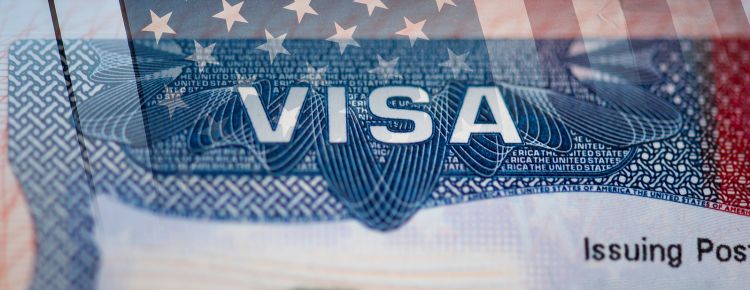Guide To Essential Immigration Terms

Understanding U.S. immigration can be complex, with a wide range of immigration terms and concepts that are crucial to navigating the system.
Whether you’re an immigrant, a professional, or simply interested in the topic, familiarizing yourself with these terms is essential.
The United States Citizenship and Immigration Services (USCIS) administers the country’s naturalization and immigration system and is an agency of the United States Department of Homeland Security (DHS)
This comprehensive A to Z guide provides clear definitions of key immigration terms, helping to demystify the processes, policies, and procedures that shape U.S. immigration.
From Adjustment of Status to Zero Tolerance Policy, this glossary covers everything you need to know to better understand U.S. immigration law and its implications.
General Immigration Terms
- Adjustment of Status (AOS): Process of applying for a Green Card (lawful permanent residence) from within the United States.
- Alien: A foreign-born person who is not a U.S. citizen.
- Asylum: Protection granted to foreign nationals who have fled their home country due to persecution.
- Biometrics: The collection of physical characteristics, such as fingerprints, for identification purposes.
- Consular Processing: The process of applying for a visa or Green Card at a U.S. consulate or embassy outside the United States.
- Deferred Action: Temporary relief from deportation, often associated with DACA (Deferred Action for Childhood Arrivals).
- Deportation (Removal): The formal removal of a foreign national from the U.S. for violating immigration laws.
- Employment Authorization Document (EAD): A work permit that allows foreign nationals to work in the U.S.
- Green Card: The document that proves a person is a lawful permanent resident of the United States.
- Immigrant Visa: A visa for foreign nationals who intend to live permanently in the United States.
U.S. Visa Categories And Types
- H-1B Visa: H-1B Visa is a visa for skilled workers in specialty occupations.
- F-1 Visa: A visa for international students attending an academic program or English Language Program.
- B-1/B-2 Visa: B1/B2 visas are Visas for temporary visitors for business (B-1) or pleasure/tourism (B-2).
- K-1 Visa: The K-1 visa is a visa for foreign fiancés of U.S. citizens.
- L-1 Visa: A visa for intracompany transferees who work in managerial positions or have specialized knowledge.
- EB-5 Visa: An immigrant investor visa for those investing in U.S. businesses.
U.S. Immigration Legal And Procedural Terms
- Naturalization: The process by which a lawful permanent resident becomes a U.S. citizen.
- Petition: A formal request made to the U.S. government, usually to sponsor an immigrant for a visa or Green Card.
- Priority Date: The date when a visa petition was filed, used to determine visa availability.
- Public Charge: A determination that an immigrant is likely to become dependent on government assistance.
- Removal Proceedings: Legal proceedings to determine whether a foreign national should be removed from the U.S.
- Refugee: A person who has fled their home country due to persecution and has been granted protection in the U.S.
- Sponsor: A U.S. citizen or lawful permanent resident who agrees to support an immigrant financially.
U.S. Immigration Miscellaneous Terms
- Temporary Protected Status (TPS): A temporary status granted to foreign nationals from certain countries experiencing problems that make it unsafe to return.
- Travel Document: A document that allows foreign nationals to re-enter the U.S. after traveling abroad.
- Visa Bulletin: A monthly publication by the Department of State that shows the availability of immigrant visa numbers.
- Waiver: A legal exemption from certain grounds of inadmissibility to the United States.
These terms are frequently encountered in various immigration processes and are essential for understanding U.S. immigration policies and procedures.
A To Z List Of Commonly Used U.S. Immigration Terms With Definitions:

A
Adjustment of Status (AOS): A process allowing certain individuals to apply for permanent residency (a Green Card) while remaining in the U.S.
Affidavit of Support: A document an individual signs to accept financial responsibility for another person, often required for family-based immigration.
Alien: Any person not a citizen or national of the United States.
Appeal: A request to a higher authority to review a decision, often used when a visa or Green Card application is denied.
Asylum: Protection granted to foreign nationals who have fled persecution in their home country.
B
Biometrics: The process of collecting physical characteristics (e.g., fingerprints, photos) for identification.
Bond: A sum of money paid to ensure that an individual released from custody will attend all required immigration hearings.
B-1/B-2 Visa: Temporary nonimmigrant visas for business (B-1) or tourism (B-2).
C
Cancellation of Removal: A legal process allowing certain individuals to avoid deportation and obtain a Green Card.
Consular Processing: The procedure of applying for an immigrant visa at a U.S. consulate abroad.
Conditional Residence: A temporary Green Card status, often given to spouses of U.S. citizens, which requires the removal of conditions after two years.
D
DACA (Deferred Action for Childhood Arrivals): A program that protects eligible immigrant youth from deportation and provides work authorization.
Deportation: The formal removal of an alien from the U.S. for violating immigration laws.
Dual Citizenship: The status of being a citizen of two countries simultaneously.
E
Employment Authorization Document (EAD): A document issued by USCIS (United States Citizenship And Immigration Services) that allows foreign nationals to work in the U.S.
Entry Without Inspection (EWI): Entering the U.S. without being inspected by an immigration officer.
Expedited Removal: A process that allows the quick deportation of individuals without a hearing.
F
Family-Sponsored Immigration: A process that allows U.S. citizens and permanent residents to sponsor certain family members for immigration.
Fiancé(e) Visa (K-1 Visa): A visa allowing the foreign fiancé(e) of a U.S. citizen to enter the U.S. to marry.
Form I-94: The I-94 form is a form issued by U.S. Customs and Border Protection that records an alien’s arrival and departure.
G
Green Card: A document that grants an immigrant permanent resident status in the U.S.
Grounds of Inadmissibility: Reasons an individual may be denied entry to the U.S. or adjustment of status (e.g., criminal history, health issues).
H
H-1B Visa: A non-immigrant visa that allows U.S. companies to employ foreign workers in specialty occupations.
Humanitarian Parole: A temporary entry to the U.S. granted for urgent humanitarian reasons.
I
ICE (Immigration and Customs Enforcement): A federal agency responsible for enforcing immigration laws.
I-130 (Petition for Alien Relative): A form filed to establish the relationship between a U.S. citizen or permanent resident and a foreign relative.
I-485 (Application to Register Permanent Residence or Adjust Status): The form used to apply for a Green Card within the U.S.
J
J-1 Visa: A nonimmigrant visa for individuals approved to participate in work-and study-based exchange visitor programs.
Jurisdiction: The authority of a court or agency to hear a case and make a decision.
K
K-3 Visa: A visa for the spouse of a U.S. citizen to enter the U.S. while awaiting Green Card processing.
K-1 Visa: A visa allowing the foreign fiancé(e) of a U.S. citizen to enter the U.S. for marriage.
L
Labor Certification: A process to determine if a U.S. worker is available for a job offered to a foreign worker, required for some employment-based Green Cards.
Lawful Permanent Resident (LPR): An immigrant who has been granted the right to live and work permanently in the U.S.
L-1 Visa: A visa for intracompany transferees in managerial positions or with specialized knowledge.
M
Migrant: A person who moves from one country to another, typically for work or other economic reasons.
M-1 Visa: A visa for students in vocational or non-academic programs.
N
Naturalization: The process by which a lawful permanent resident becomes a U.S. citizen.
Nonimmigrant Visa: A visa issued to individuals who intend to stay in the U.S. temporarily.
O
Overstay: Remaining in the U.S. beyond the expiration of a visa or authorized period of stay.
Optional Practical Training (OPT): Temporary employment for international students related to their field of study.
P
Parole: Temporary permission to enter the U.S. for urgent humanitarian reasons or significant public benefit.
Petition: A formal request to the government to grant a visa, Green Card, or other immigration benefit.
Priority Date: The date a visa petition was filed, used to determine visa availability.
Q
Quota: The numerical limit on certain types of visas issued in a fiscal year.
R
Refugee: A person who has fled their home country (flees his or her country) due to persecution and seeks protection in the U.S.
Removal Proceedings: The legal process to determine whether an individual should be deported from the U.S.
Re-entry Permit: A document allowing a Green Card holder to re-enter the U.S. after traveling abroad for an extended period.
S
SEVIS (Student and Exchange Visitor Information System): A system used to track and monitor schools and programs, students, and exchange visitors in the U.S.
Special Immigrant Visa (SIV): A visa for certain foreign nationals, such as translators or interpreters, who assist the U.S. government.
Sponsor: A person who agrees to support an immigrant financially, often required for family-based immigration.
T
Temporary Protected Status (TPS): A temporary immigration status granted to nationals of certain countries experiencing problems that make it unsafe to return.
Travel Document: A document issued to foreign nationals to re-enter the U.S. after traveling abroad.
T Visa: A visa for victims of human trafficking.
U
U Visa: A visa for victims of certain crimes who assist law enforcement.
Undocumented Immigrant: A person residing in the U.S. without legal permission.
V
Visa: A document or stamp that allows a foreign national to enter the U.S. for a specific purpose.
Visa Bulletin: A monthly publication by the Department of State that shows the availability of immigrant visa numbers.
W
Waiver: A legal exception that allows an individual to overcome certain grounds of inadmissibility.
Withholding of Removal: Protection from deportation to a country where an individual’s life or freedom would be threatened.
X, Y, Z
Xenophobia: The fear or hatred of foreigners, often discussed in immigration contexts.
Youth Visa: There is no specific “Youth Visa” in U.S. immigration, but minors can apply for visas, including F-1 (student), J-1 (exchange), or others.
Zero Tolerance Policy: A policy that led to the prosecution of all individuals entering the U.S. illegally, often associated with family separation.
This comprehensive list covers key immigration terms frequently encountered in the U.S. immigration process.
Immigration Basics
Definition Of Immigration
- The process of entering and settling in a country for permanent residence.
- Immigration involves the movement of people from one country to another, often for economic, social, or political reasons.
- Immigration can be voluntary or involuntary, and it can involve individuals, families, or groups.
Immigration Authorities
- The Department of Homeland Security (DHS) is the primary authority responsible for enforcing immigration laws in the United States.
- U.S. Citizenship and Immigration Services (USCIS) is a component of DHS that handles immigration benefits, such as visa applications and naturalization.
- Immigration and Customs Enforcement (ICE) is another component of DHS that enforces immigration laws and conducts deportations.
Immigration Status
Lawful Permanent Resident (LPR)
- A person who has been granted the right to live and work in the United States permanently.
- LPRs receive a “green card” as physical evidence of their status and are also known as “Permanent Resident Aliens.”
- LPRs can apply for U.S. citizenship after meeting certain eligibility requirements.
Non-Immigrant
- A person who enters the United States for a specific purpose, such as work, study, or tourism, and is authorized to stay for a limited period.
- Non-immigrants must comply with the terms of their visa and depart the United States before their authorized stay expires.
- Examples of non-immigrant visas include H-1B, F-1, and B-2 visas.
Undocumented
- A person who enters the United States without inspection or overstays their authorized stay.
- Undocumented individuals may be eligible for certain forms of immigration relief, such as asylum or deportation relief.
- Undocumented individuals may also be eligible for Deferred Action for Childhood Arrivals (DACA) or Temporary Protected Status (TPS).
U.S. Visa Types
Immigrant Visa
- A visa that allows a person to enter the United States for permanent residence.
- Immigrant visas are issued to individuals who have a family or employment-based petition approved by USCIS.
- Examples of immigrant visas include family-based visas, such as IR-1 and CR-1 visas, and employment-based visas, such as EB-1 and EB-2 visas.
Non-Immigrant Visa
- A visa that allows a person to enter the United States for a specific purpose, such as work, study, or tourism.
- Non-immigrant visas are issued to individuals who meet specific eligibility requirements, such as having a job offer or being accepted into a university.
- Examples of non-immigrant visas include H-1B, F-1, and B-2 visas.
Immigration Processes
Adjustment Of Status
- The process of applying for a green card from within the United States.
- Adjustment of status is available to individuals who are eligible for a green card and are physically present in the United States.
- The process involves filing Form I-485 with USCIS and attending an interview.
Consular Processing
- The process of applying for a visa at a U.S. embassy or consulate abroad.
- Consular processing is available to individuals who are eligible for a visa and are outside the United States.
- The process involves filing a visa application and attending an interview at the embassy or consulate.
Change Of Status
- The process of changing from one non-immigrant status to another.
- Change of status is available to individuals who are currently in the United States on a non-immigrant visa and wish to change to a different non-immigrant status.
- The process involves filing Form I-539 with USCIS and attending an interview.
Immigration Enforcement
Deportation/Removal
- The process of removing an individual from the United States for violating immigration laws.
- Deportation/removal proceedings are conducted by ICE and involve a hearing before an immigration judge.
- Individuals who are deported may be barred from re-entering the United States for a certain period.
Detention
- The process of holding an individual in custody while their immigration case is pending.
- Detention is typically used for individuals who are considered a flight risk or a danger to the community.
- Individuals who are detained may be eligible for bond or other forms of release.
Immigration Relief
Asylum
- A form of protection that allows individuals to remain in the United States if they have a well-founded fear of persecution in their home country.
- Asylum is available to individuals who are physically present in the United States and meet specific eligibility requirements.
- The process involves filing Form I-589 with USCIS and attending an interview.
Cancellation Of Removal
- A form of relief that allows individuals to remain in the United States if they have been physically present in the United States for at least 10 years and meet specific eligibility requirements.
- Cancellation of removal is available to individuals who are in removal proceedings and meet specific eligibility requirements.
- The process involves filing Form I-881 with USCIS and attending a hearing.
Immigration Laws
- The Immigration and Nationality Act (INA) is the primary law that governs immigration in the United States.
- The INA sets forth the eligibility requirements for immigration benefits, such as visas and green cards.
- The INA also sets forth the grounds for deportation and removal.
Immigration Court
The Immigration Court is a specialized court in the United States that handles cases related to immigration law.
These courts are overseen by the Executive Office for Immigration Review (EOIR), which is a part of the U.S. Department of Justice.
Immigration Courts are responsible for hearing cases involving foreign nationals who are facing removal (deportation) from the United States.
Immigration Judge
- An immigration judge is a judicial officer who presides over immigration proceedings.
- Immigration judges are responsible for conducting hearings and making decisions on immigration cases.
- Immigration judges are appointed by the Attorney General.
Board Of Immigration Appeals (BIA)
- The BIA is an appellate body that reviews decisions made by immigration judges.
- The BIA is responsible for interpreting immigration laws and regulations.
- The BIA is composed of members who are appointed by the Attorney General.
Immigration Court proceedings are critical in determining the future of individuals who are not U.S. citizens and may have significant consequences for their ability to remain in the country.The
Other Immigration Terms
Alien
- A person who is not a U.S. citizen or national.
- Aliens may be eligible for immigration benefits, such as visas and green cards.
- Aliens may also be subject to deportation and removal.
Beneficiary
- A person who is the recipient of an immigration benefit, such as a visa or green card.
- Beneficiaries may be eligible for certain forms of immigration relief, such as asylum or deportation relief.
- Beneficiaries may also be subject to deportation and removal.
Petitioner
- A person who files an immigration petition on behalf of a beneficiary.
- Petitioners may be U.S. citizens or lawful permanent residents.
- Petitioners must meet specific eligibility requirements, such as having a qualifying relationship with the beneficiary.
Respondent
- A person who is the subject of an immigration proceeding.
- Respondents may be eligible for certain forms of immigration relief, such as asylum or deportation relief.
- Respondents may also be subject to deportation and removal.
Conclusion
Immigration is a complex and multifaceted field that involves various laws, regulations, and processes. understanding the immigration terms is crucial to understand policies and procedures.
Understanding the basics of immigration, including immigration status, visa types, and immigration processes, is essential for navigating the immigration system.
Immigration relief, such as asylum and cancellation of removal, may be available to individuals who meet specific eligibility requirements.
Immigration laws and regulations are subject to change, and it is essential to stay informed about the latest developments in the field.
Related Blog

Check USCIS Case Status Online | Quick Guide
Are you seeking to check your USCIS case status without the hassle of phone calls and in-person appointments? The USCIS online portal provides a seamless and convenient way to access your immigration case status. This blog post will guide you through the process of effortlessly checking your USCIS case status online, helping you stay informed […]

Renewing US Visa: Guide To A Smooth Process
The desire to extend your stay in the United States, whether it’s for work, study, or leisure, often necessitates renewing your US visa. While the thought of going through this process might initially seem overwhelming, understanding the ins and outs of renewing US visa can help you navigate it with ease. This comprehensive guide will […]

Navigating The I-129F Process For Your K-1 Visa Journey
Starting the K-1 visa application for your foreign fiancé(e) begins with the I-129F form. This guide provides straightforward steps to complete your I-129F accurately, avoiding errors that could delay your reunion. Get ready to learn the essentials for a seamless K-1 application journey. Key Takeaways Understanding Form I-129F And Its Purpose The I-129F form – […]


